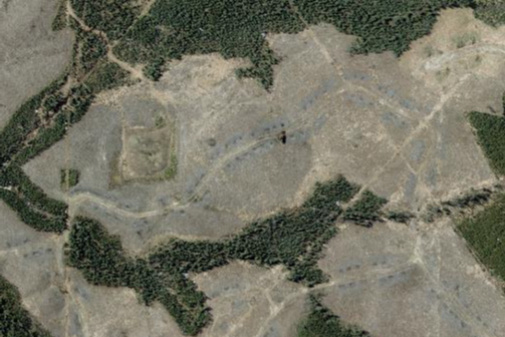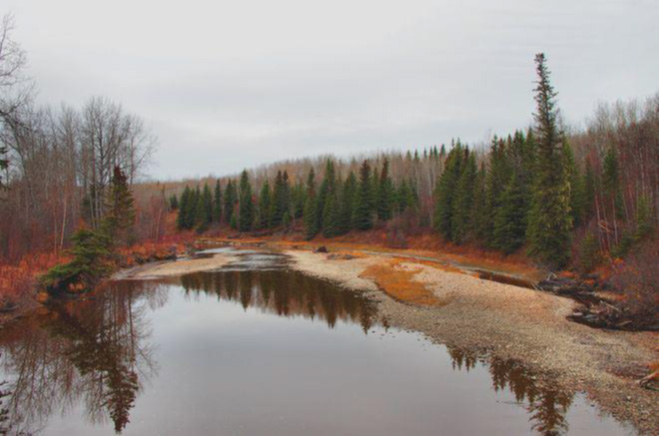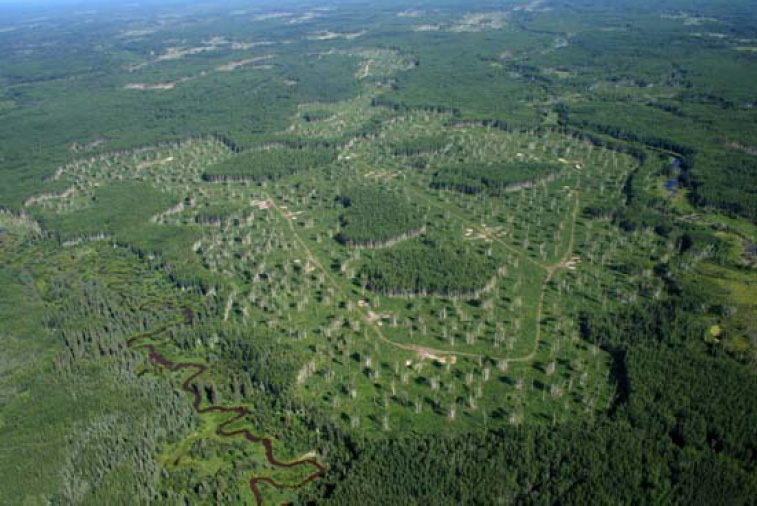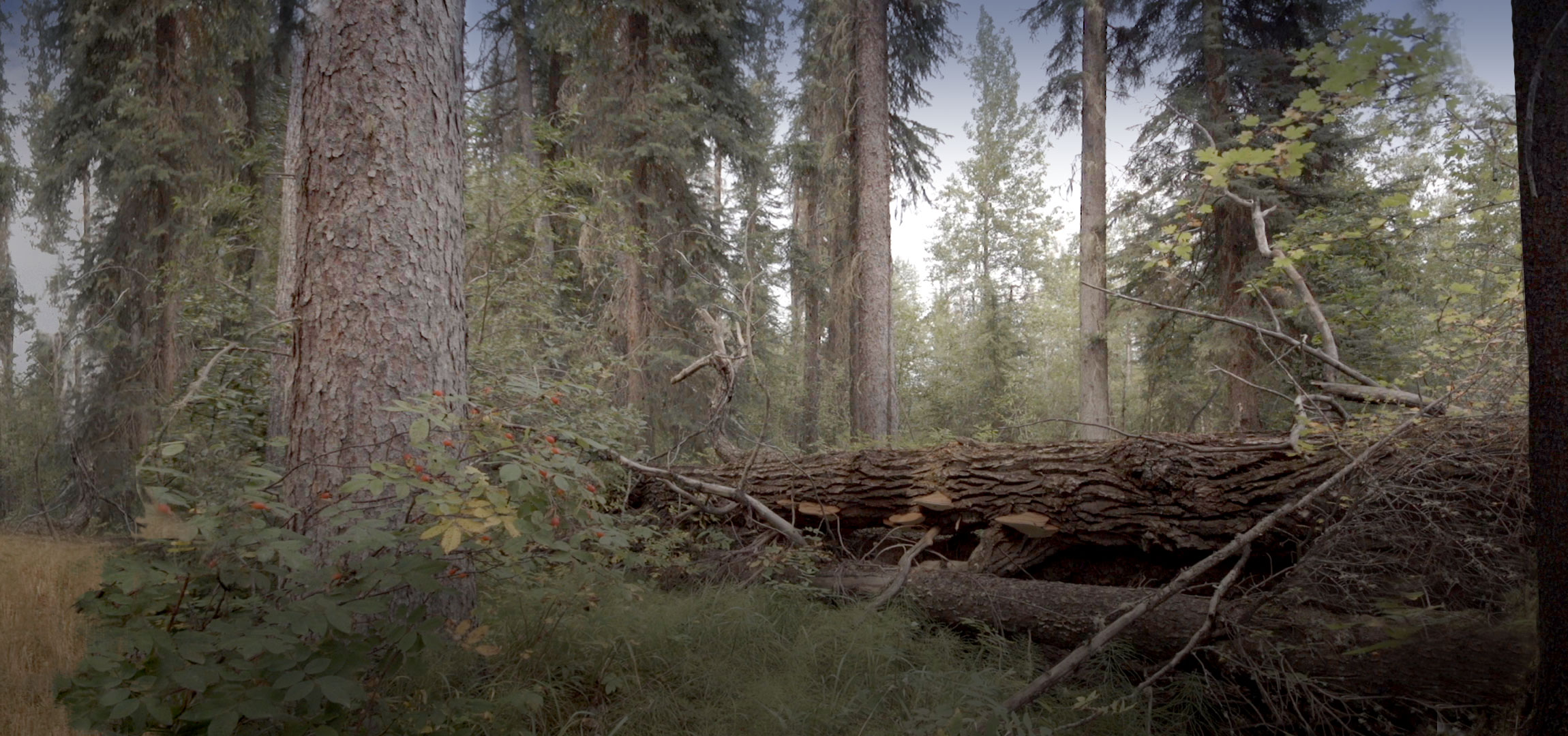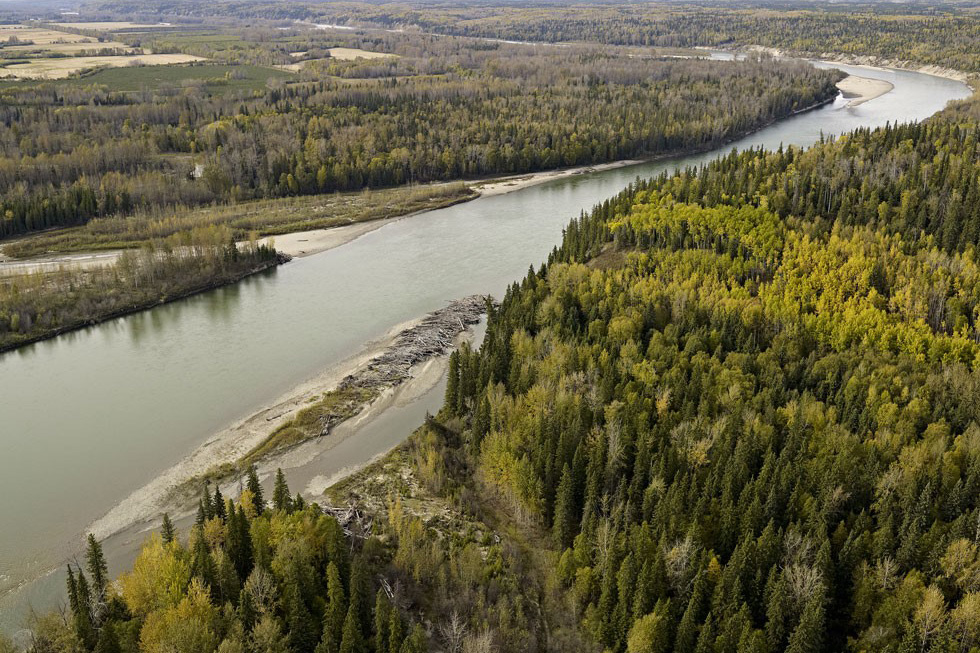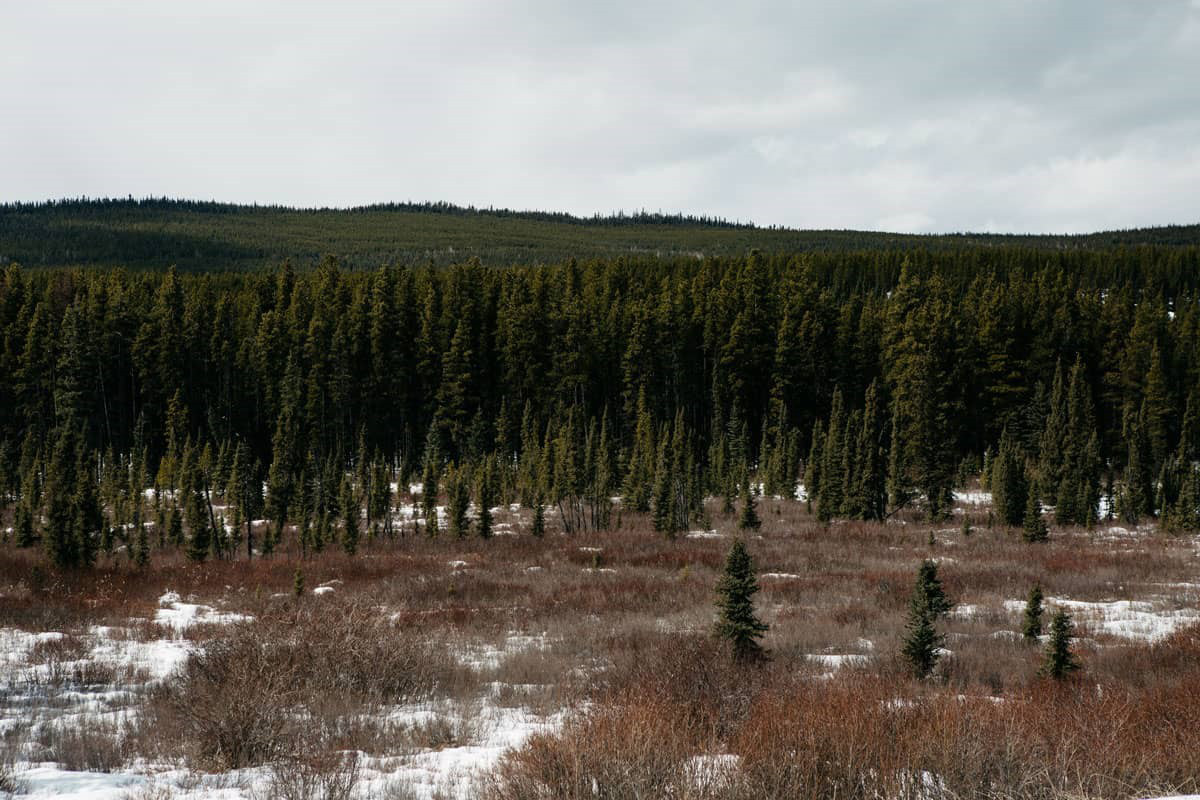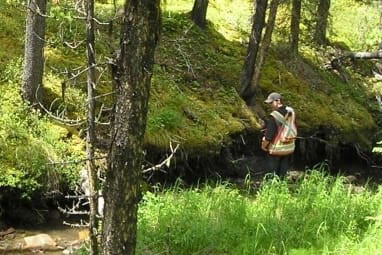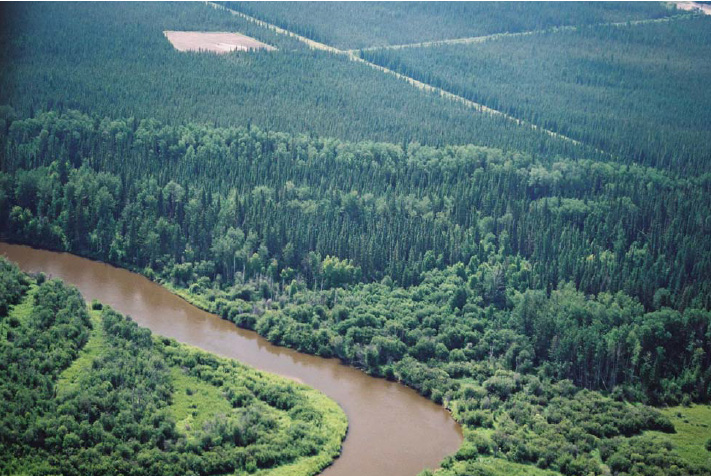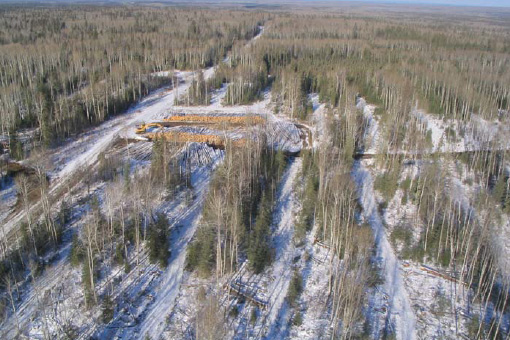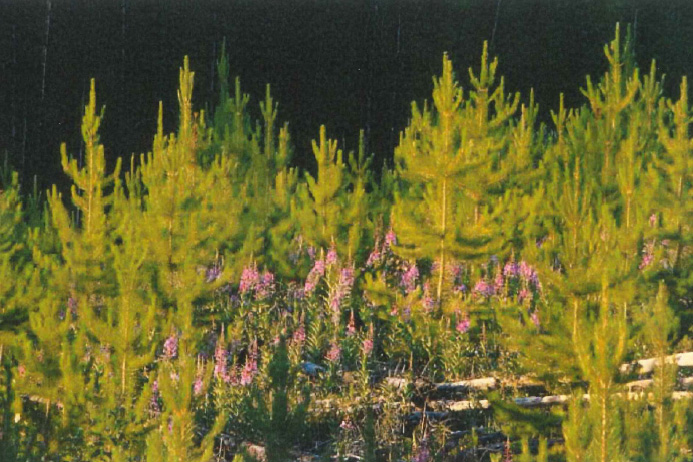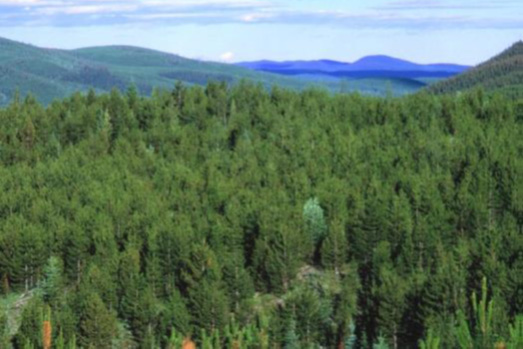This project was a spatial modelling exercise that created coarse-scale, pre-industrial landscape metrics for the Pembina Timberland FMA area in Alberta. The primary goal was to understand if, or in what ways the current conditions of the FMA area align with the historical, pre-industrial “natural” range.
The results suggest that this landscape is already beyond its historic range, and heading in the wrong direction. More specifically, the amount of young forest (i.e., <40 years) is well below anything observed from the NRV simulation modelling. On the other hand, the amount of mature forest (i.e., 80–120 years) is currently well beyond the upper boundary of NRV.
The ecological implications of low levels of young forest are not widely recognized. A large number of specialized species are dependent on disturbance, creating a smaller, but unique diversity peak in biodiversity within a few years after disturbance thanks to the sudden physical, chemical, and environmental changes. Perhaps the greater challenge associated with a lack of disturbance on all (active and passive) parts of the landscape is that amount of old and mature forest (combined) will
continue to grow, creating higher risk levels to fire and insect and disease outbreaks.
The only thing preventing this future scenario from playing out is if the FMA area experiences one or more very large wildfires in the near future. If the disturbance patterns of the last 40 years represented business as usual, over the next 20 years, the only thing that will change is an increase in the amount of old + mature forest, which will create higher social, economic, and ecological risks from wildfires.
The only options for avoiding this scenario are a) more planned disturbance activities, or b) more unplanned natural (wildfire) events.








